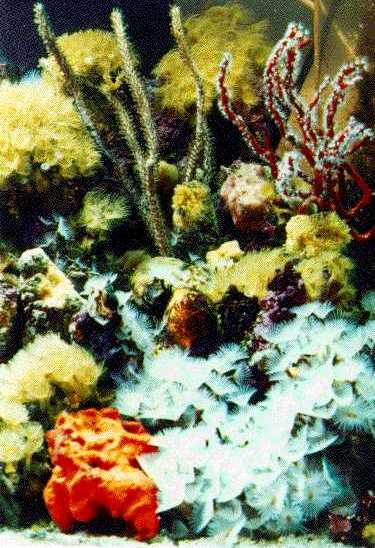My History with Feather Dusters
My History with Feather Dusters
I am re-starting my tank and want to have lots of feather dusters of different kinds. I can speak to Coco worms but I hope that their requirements are the same as the hitch hikers that I have had in the past. If so, they will be easy to keep in my set up.
In my first tank back in the 90's, I moved a rock and found a cluster of the ones shown in the picture. I was feeding powdered food which is cheap. I added powder to the water stream to get at everything including feather dusters. It was also easy to spot feed them by taking a pinch and sprinkling it into the heads. They are not picky at all and the colony grew.
In my second tank, that started after I relocated, I had some that came in on a rock that were small and had a white head but a greyish tube. I wasn’t adding lots of corals but I was feeding heavily. They must have spawned because in a few months, they were everywhere. When they reached a saturation point, they probably spawned often….I guess.
I liked them but my wife didn’t like the grey tubes all over the rock, especially without any corals to hide them. The heads didn’t poke out in-between the corals and the tubes got hard to overlook.
I eventually scraped almost all of them off of the rock like a pest and started stocking the tank with fish and corals while continuing the feeding. The remaining feather dusters didn’t’ come back again like a pest but remain very hardy for years.
Then I went on vacation and my tank crashed, because of a faulty auto-top off setting. Every single thing in the tank died except for one of those feather dusters.
So … If the prettier ones are like the wild ones, then they are easy to feed. Does anyone know if well fed Coco worms reproduce the same way that these wild ones do? I will be restarting my tank with them.

